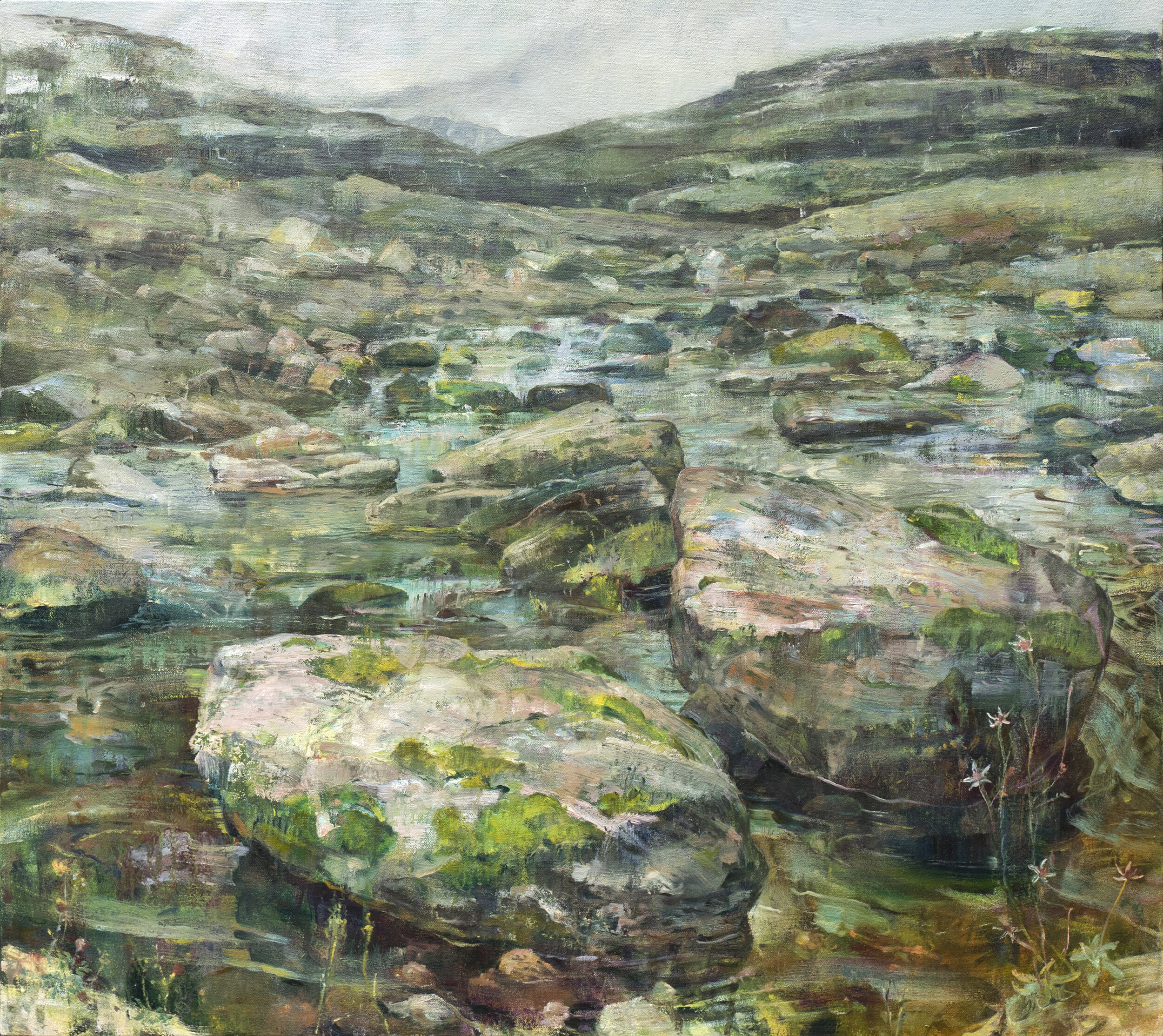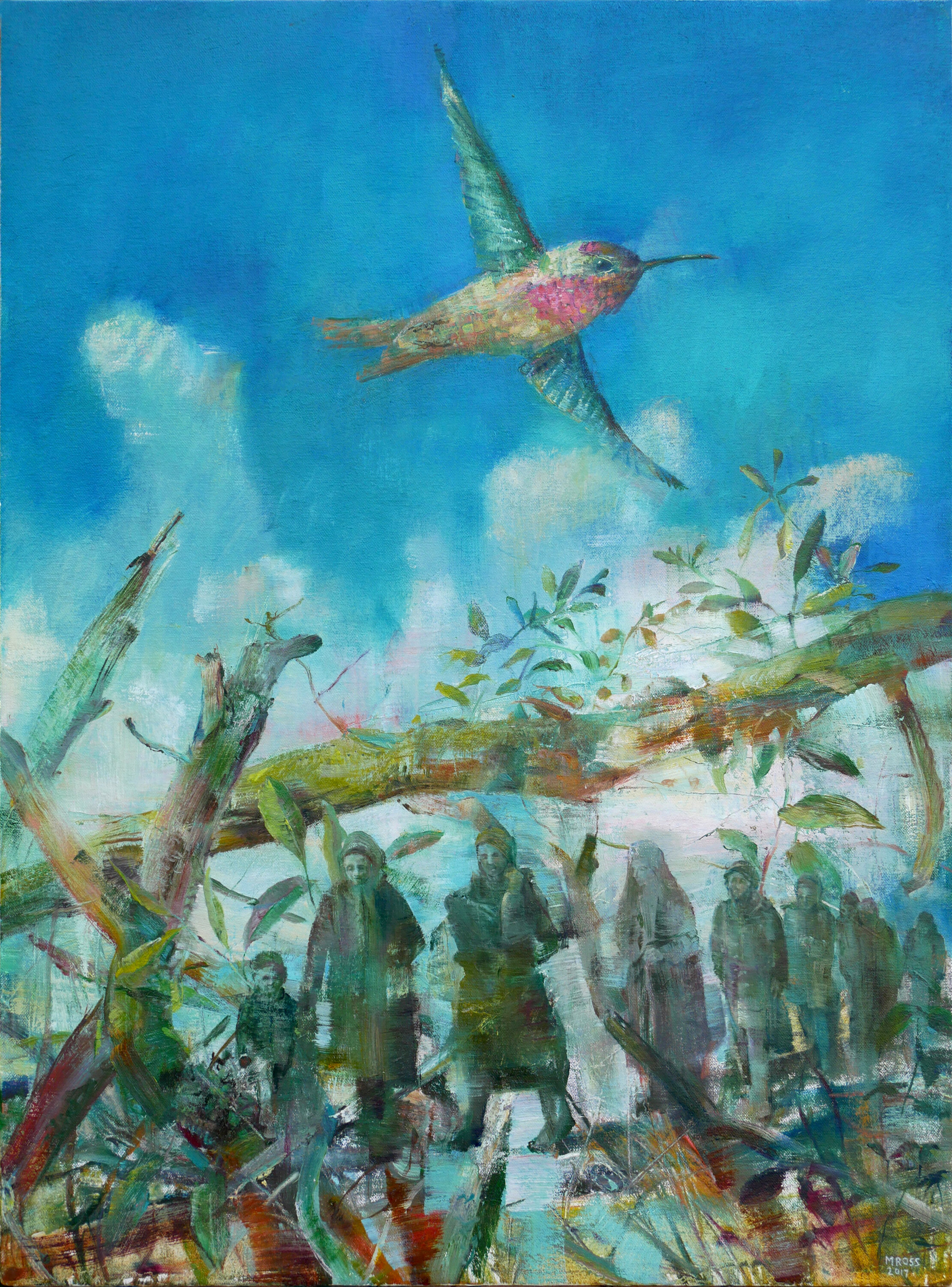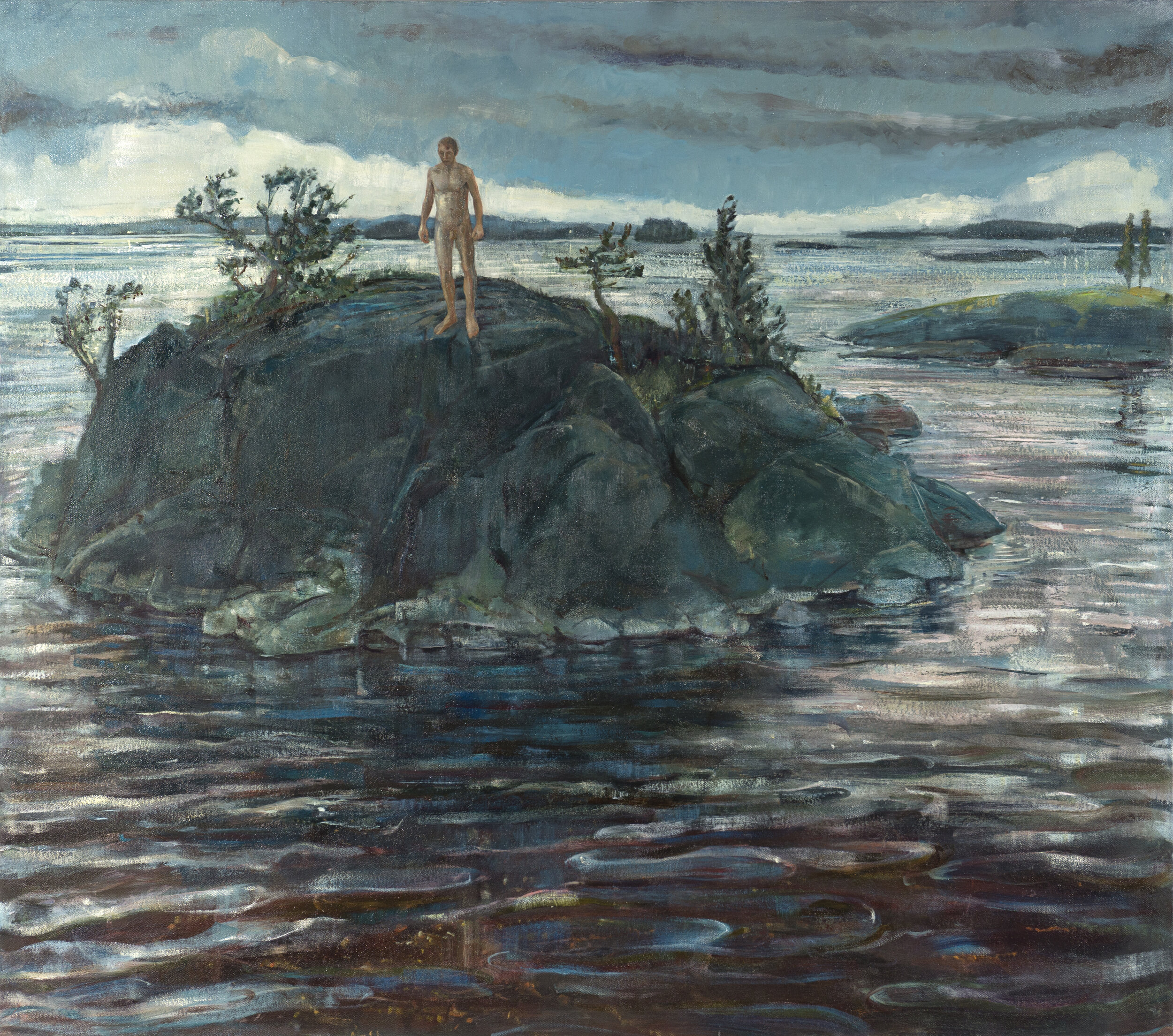Michael Knud Ross
Bio
Michael Ross grew up in Norway and Finland, moved to Maryland as an adolescent, and graduated with a B.A. in anthropology from the University of Maryland in 2000. Before moving to Athens, Georgia, where he finished his MFA in painting at the University of Georgia in 2016, Ross attended artist residencies in Norway, Iceland, and West Africa, and lived for several years in San Francisco. He has shown his work in galleries around the country, and is featured in the permanent collections of the University of Georgia, the Washington, DC Department of Transportation, and in numerous private collections in the United States and in Europe. In his work, Ross explores the interplay of the human, natural, and mythical worlds in a manner that emphasizes emotional and sensory experience. Ross continues to work out of his studios in Athens, Georgia, and Bethesda, Maryland.
Statement
The figures in my paintings are on the move. Some move quickly through a landscape, others meander; some are just leaving, others soon arriving. They exist in transient flux but have a sense of mission: a decision is looming, an obstacle lies ahead that will leave them changed. They enact stories about youth and transformation, following and leading, safety and danger, companionship and separation. Like a film director, I want to create specific worlds that trigger collective as well as personal memories. These worlds must feel real and lived, if heightened and cinematic. We enter them through obstructions that frame our point of view, and look in as if through a lens, a portal, or mental picture.
I want to evoke other senses in my paintings: a sense of taste, of tactility, of temperature and humidity, of speed, of attraction and repulsion. I take visual delight in images of opulence and abundance — but I am also attuned to scarcity and absence. My work is about the tension between youth and death, plenty and poverty, home and away, one group and another, the group and the individual, beginnings and endings.
I like painting the thick, sugary fat of piped icing on a cupcake, and the soft down on the neck of a bird with its sharp beak and bristly wing feathers. I like painting waxy leaves as they dip inward towards their spines and curve outward from the stem. The magnolia, by night and by day, has become an important symbol for me: culturally, it is the gracious and lush South with all its beauty and tragedy; personally, it is my new home. In my work, I visually correlate patterns of leaves and desserts, feathers and clothing. My paintings affirm a link between the biological and the cultural, and between the physical and the symbolic.
Many of my paintings are set at night. Night is illuminated by orange street lamps and sparkling chandeliers, traffic lights, neon signs, the moon and the constellations. It is also a time of quiet and solitude. The day’s work is done, and people move from the mundane and practical to the reflective, the romantic, the imaginative, and finally into dreams. As we sleep, animals come out to forage and the botanical world continues to respire





